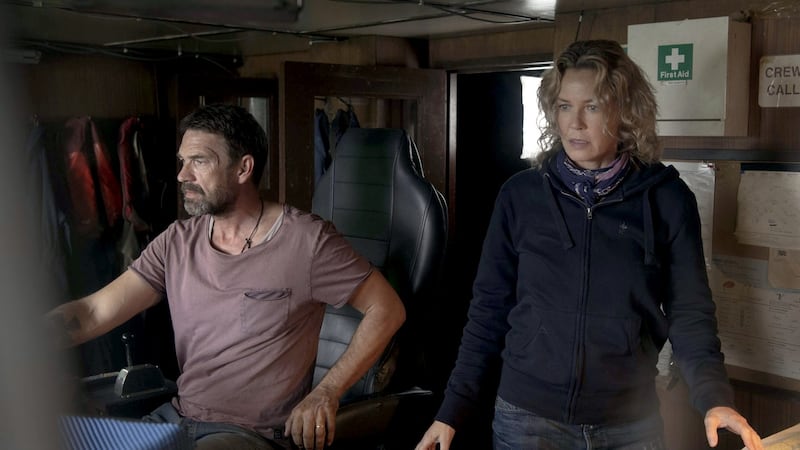Avast, me hearties. Neasa Hardiman, one of our era's most distinguished TV directors, moves towards what she hoped would be the big screen (for reasons we needn't mention, Sea Fever arrives on the main streaming sites) with a briny horror that navigates some familiar territory.
The Thing is to portside. Alien is off to starboard. As we sail deep into ever weirder waters, Jaws recedes over the battered bow. The metaphorical vessel suffers some severe buffeting. The hull scrapes dangerous reefs. But it completes the voyage with no fatal holes to the keel. That’s to say the film has its problems, but just about shrugs them off.
Hermione Corfield plays Siobhán, a marine biologist spending time on an Irish trawler to study anomalies in the catch (little does she know … and so forth). Early on we learn that mariners regard her red hair as unlucky. She is also – like Hooper in Jaws – a boffin among Hemingwayesque people of action. Other tensions emerge in a journey that begins with disappointment and passes through unease before ending in damp terror.
Dougray Scott does his gritty stuff as one seasoned crew member. Connie Nielsen does something deeply weird with a mutated Irish accent – it seems she's playing a relocated Dane – as Freya, the resilient captain of the ship (and Dougray's wife). The bickering is mostly at subsonic level, but there is enough murmuring tension to prepare us for greater disasters ahead.
Those catastrophes begin with the appearance of odd patterns in the bulkheads. Diving in to investigate, Siobhán finds that the hull is decorated with unusual fibres that lead off to unachievable depths. Could this be a giant-sea-creature movie? They are always fun. Can’t we have one of those?
Well, not yet anyway. “It could be a species of barnacle,” somebody says hopefully. The danger proves to be a sort of oily, maritime infection that leads to weird behaviour and severe cases of death.
Cabin fever sets in. Paranoia looms. The word “quarantine” is mentioned at least once. (If you really want us to again draw comparisons with current developments then we can do that, but let us just wave the words “prescient release” and move on to other things.)
Hardiman, who honed her skills on shows such as Happy Valley and Jessica Jones, makes a virtue of her modest budget by stressing growing unease rather than crash-bang shocks or full-on evisceration. Her most useful weapon is the (pardon my German) sense of Unheimliche we get from corporeal invasions that remind us of earth-bound diseases.

Sea Fever is cinema of the fantastic, but it never entirely escapes reality. Much of the picture is taken up with procedures and processes. These are practical people dealing with a pressing emergency. Anybody with a problem with ocular horror should have hands ready to press over face from about the 30-minute mark.
The wide-screen photography from Ruairí O’Brien increases rather than works against the growing sense of claustrophobia – all that empty space we could be enjoying. Only in space dramas and sea thrillers can you get this closed-in oppression (even prisons can be escaped). The longer the drama goes on, the more overbearing it seems.
Hardiman’s script is, alas, not quite at the level of her direction. The film profits from spooky design, queasy high-concept and a canny gift for camera placement. But the dialogue is more serviceable than sparkling, and the characterisation tends towards single-adjectival traits rather than fully fleshed personalities. We are not much closer to discovering who they all are after sharing their terror in enclosed quarters for 90 minutes.
Still, Sea Fever, well-reviewed at Toronto and beyond, is just the sort of feature debut to generate tasty careers. We await the Irish director’s next move with enhanced excitement.
Available on major streaming sites from April 24th












